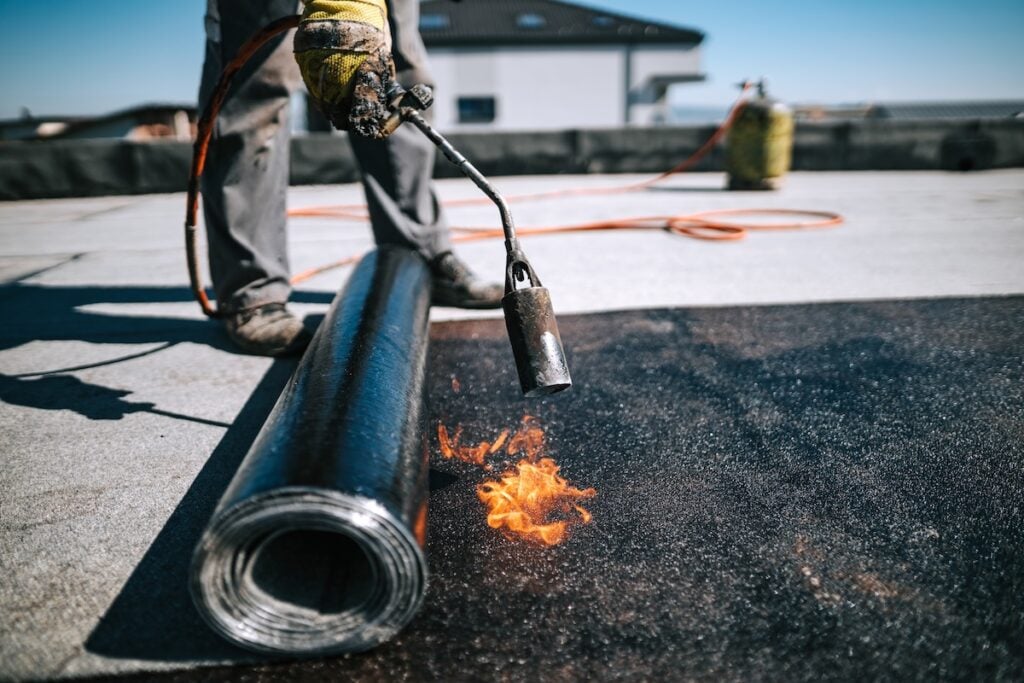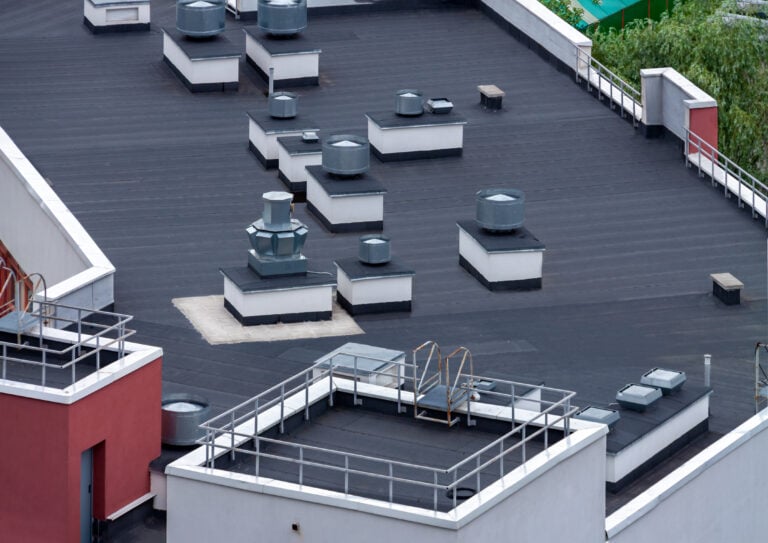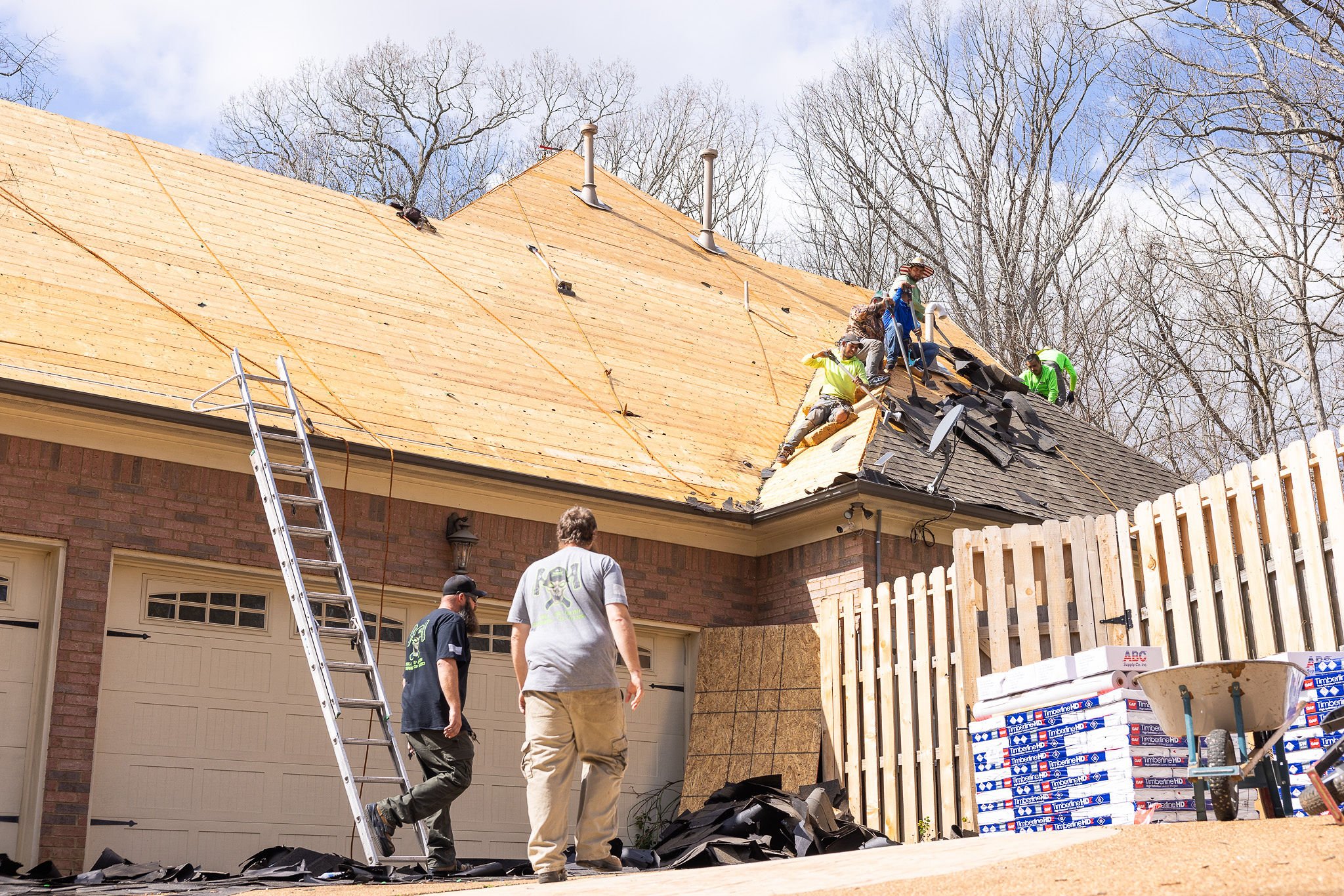Flat roofs are popular choices for commercial buildings and some residential properties because of their cost-effectiveness and functionality. However, these roofing systems require consistent care to perform at their best. Regular flat roof maintenance can extend your roof’s lifespan, prevent costly repairs, and protect your property investment.
This comprehensive guide covers everything you need to know about maintaining your flat roof. You’ll discover essential maintenance tasks, warning signs to watch for, and professional tips that help keep your roof in excellent condition for years to come.
- Understanding your flat roof system
- Essential flat roof maintenance tasks
- Seasonal maintenance checklist
- Signs your flat roof needs professional attention
🤔 Understanding Your Flat Roof System

Before diving into maintenance specifics, it’s important to understand what makes flat roofs unique. Unlike sloped roofs that rely on gravity to shed water quickly, flat roofs have minimal slope and depend on proper drainage systems and waterproof membranes to keep moisture out.
Most flat roofs use materials like EPDM rubber, TPO (thermoplastic polyolefin), modified bitumen, or built-up roofing systems. Each material has specific maintenance requirements, but the fundamental principles remain consistent across all types.
The key components of your flat roof system include the membrane surface, drainage systems, flashing around penetrations, and insulation layers. Understanding these elements helps you identify potential problem areas during routine inspections.
Essential Flat Roof Maintenance Tasks
Proper flat roof maintenance involves several critical tasks that should be performed regularly. These activities help identify issues before they become major problems and extend your roof’s service life significantly.
- Regular Inspections and Cleaning: Inspect your roof at least twice a year (spring and fall) to check for damage, wear, or problem areas. Clear debris like leaves and branches to prevent clogged drainage or moisture buildup, and pay extra attention to areas around HVAC units, vents, and skylights to avoid leaks.
- Drainage System Maintenance: Clean gutters, downspouts, and drains regularly to ensure proper water flow. Remove debris, inspect drain covers, and make sure everything is secure to avoid blockages and water damage.
- Membrane Care and Protection: Keep the roof membrane clean and free from debris to prevent punctures or tears. Minimize foot traffic, use designated walkways, and address signs of wear, cracking, or blistering immediately to maintain water resistance.
💡 7 Critical Tips for Effective Flat Roof Maintenance

Successful flat roof maintenance requires attention to detail and consistent effort. These essential tips help you maintain your roof effectively and avoid common mistakes that lead to premature failure.
1. Establish a Regular Inspection Schedule
Create a maintenance calendar that includes monthly visual inspections and detailed quarterly examinations. Document your findings with photos and notes to track changes over time. This systematic approach helps you identify trends and address issues before they become serious problems.
2. Keep Drainage Systems Clear
Water is flat roofing’s biggest enemy. Ensure that all drains, gutters, and scuppers remain free of debris and function properly. Test your drainage system during light rain to confirm that water flows freely and doesn’t pool on the roof surface.
3. Address Issues Immediately
Small problems become big problems quickly on flat roofs. When you identify damage, loose flashing, or membrane issues, address them immediately or contact a professional roofer. Delaying repairs often results in more extensive damage and higher costs.
4. Protect High-Traffic Areas
If people regularly access your roof for maintenance or other purposes, establish designated walkways and use protective mats in high-traffic areas. This simple step prevents unnecessary wear and extends your membrane’s lifespan.
5. Monitor Roof Penetrations
Flashing around vents, HVAC units, and other roof penetrations requires special attention. These areas are common leak sources and should be inspected carefully during every maintenance visit. Look for loose or damaged flashing, cracked sealants, or signs of water infiltration.
6. Maintain Proper Documentation
Keep detailed records of all maintenance activities, repairs, and inspections. This documentation helps you track your roof’s condition over time, plan future maintenance needs, and may be required for warranty claims.
7. Know Your Roof’s Age and Materials
Understanding your roof’s age, materials, and installation history helps you anticipate maintenance needs and plan for eventual replacement. Different materials have varying lifespans and maintenance requirements, so tailor your approach accordingly.
⚠️ Signs Your Flat Roof Needs Professional Attention

While regular maintenance can prevent many problems, certain issues require professional expertise. Recognizing these warning signs helps you get help before minor problems become major disasters.
Water Damage and Leaks
Any signs of water infiltration require immediate professional attention. Look for water stains on interior ceilings, wet insulation, or standing water on the roof surface after rain. These issues indicate membrane failure or drainage problems that need expert diagnosis and repair.
Membrane Deterioration
Extensive cracking, blistering, or areas where the membrane is pulling away from the substrate require professional evaluation. These conditions often indicate underlying problems that go beyond simple surface repairs.
Structural Issues
If you notice sagging areas, soft spots, or other signs of structural problems, contact a professional immediately. These issues may indicate serious underlying damage that could compromise your building’s safety.
❄️ Seasonal Maintenance Checklist
Different seasons present unique challenges for flat roofs. Following a seasonal maintenance schedule helps you address specific issues before they cause significant problems.
Spring Maintenance Tasks
After winter weather, inspect your roof for damage caused by freeze-thaw cycles, snow loads, or ice dams. Clear away any debris that accumulated during the winter months and check that drainage systems are functioning properly after spring snowmelt.
Look for signs of membrane damage or separation that may have occurred during cold weather. Address any issues immediately to prevent problems during the upcoming rainy season.
Summer Preparation
Hot summer temperatures can be particularly challenging for flat roof membranes. Inspect your roof before the peak heat season and ensure that the surface is in good condition to withstand temperature extremes.
Check HVAC units and other roof-mounted equipment to ensure they’re properly secured and not creating stress points on the membrane. Clean around these units to prevent debris accumulation.
Fall Readiness
Prepare your roof for winter by conducting a thorough inspection and addressing any maintenance issues. Clean all drainage systems to handle increased precipitation and remove leaves and other debris that could cause problems during winter weather.
Ensure that flashing is secure and seals are intact around all roof penetrations. These areas are particularly vulnerable during freeze-thaw cycles and should be in excellent condition before winter arrives.
Winter Monitoring
While you shouldn’t perform extensive maintenance work in harsh winter conditions, monitor your roof for signs of problems. Watch for ice dam formation, excessive snow accumulation, or signs of leaks inside your building.
👨🔧 Trust Summit Roofing & Restoration for Your Commercial Roofing Needs
Effective flat roof maintenance requires expertise, dedication, and the right approach for your specific roofing system. While basic maintenance tasks can be handled in-house, complex issues and comprehensive care require professional attention.
Don’t wait for small problems to become major headaches. Contact Summit Roofing & Restoration today to schedule your flat roof maintenance consultation and discover how our professional services can protect your property for years to come.


